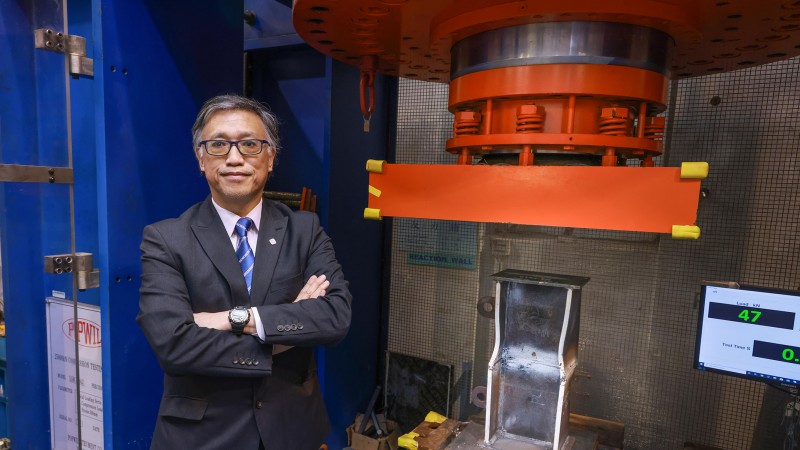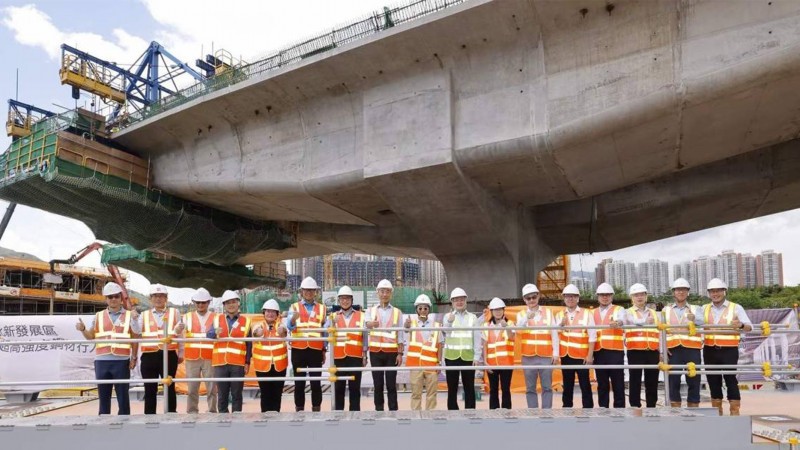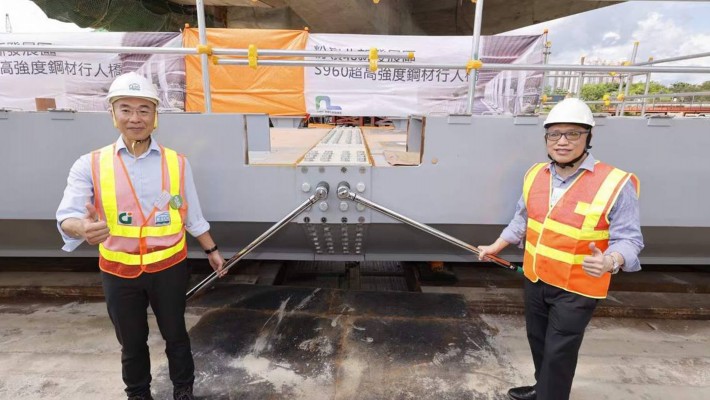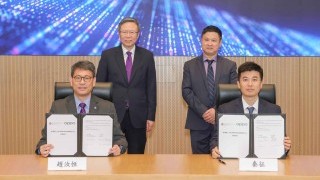Transformative welding technology unlocks the full potential of S960 steel
A PolyU research team recently introduced a revolutionary welding process aimed at mitigating the reduction of the mechanical properties of S960 steel. This technology enables the effective application of ultra-strength S960 steel by precisely controlling heat input during welding, and it has been successfully implemented in a bridge construction in Hong Kong.
Improved welding technology enhances S960 steel application
A research team led by Professor Chung Kwok-fai, Professor of the Department of Civil and Environmental Engineering, and Director of the Chinese National Engineering Research Centre for Steel Construction (Hong Kong Branch) (CNERC) of PolyU, focused on examining the effects of heat input energy during welding onto the S960 steel – its strength and ductility may reduce up to 20% to 30%.
Through experimental investigations and numerical simulations, the research team developed an innovative solution to maintain the mechanical characteristics of S960 steel. Collaborating with a local steel fabricator, they identified optimal heat energy ranges for various weld joint designs for S960 steel across different steel thicknesses, mitigating or eliminating the adverse impacts of welding.
By using thinner steel components and reducing the overall number of components, the self-weight of the structure and the required number of foundation piles can be minimised. This, in turn, leads to reduced carbon emissions and enhanced sustainability.

Led by Prof. Chung Kwok-fai, the research team has developed a welding technology to maximise the potential of S960 steel.
A real-world application
Such innovative technology has been adopted by the Civil Engineering and Development Department of the HKSAR Government in two segments of a footbridge in the first phase of the Fanling North New Development Area – Fanling Bypass Eastern Section (Shek Wu San Tsuen North to Lung Yeuk Tau). The two segments were constructed as stiffened box girders using S960 steel and manufactured in a facility with stringent control over the welding procedures.
This project marks the use of S960 steel in Hong Kong’s public work for the first time, and facilitates innovative application of high-strength steel in bridge construction.
Professor Chung emphasised the team’s commitment to advancing high-strength steel construction through scientific research and engineering principles. “We are dedicated to conducting impactful research on the scientific understanding, engineering principles and design guidance needed to facilitate engineers in adopting high-strength S690 and S960 steel in construction,” he said. He noted that the Fanling North project serves as a valuable reference for developing future technical guidelines and specifications for S960 steel construction in Hong Kong.

The innovative welding technology was adopted in the Fanling North New Development Area – marking its first use in Hong Kong public works, with two segments of the footbridge assembled onsite in September this year.






